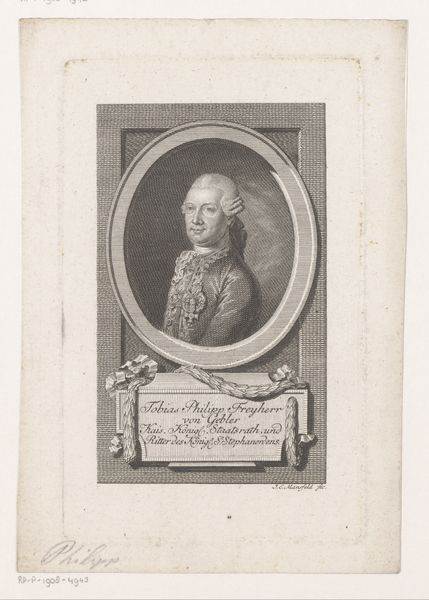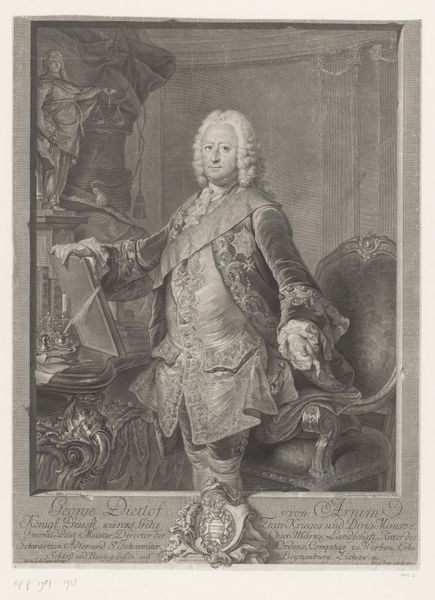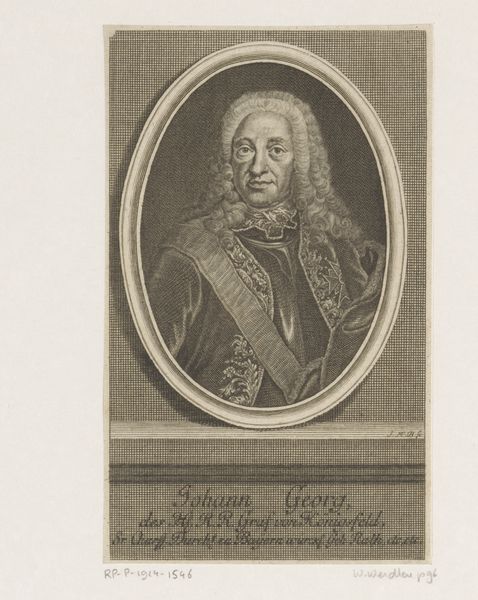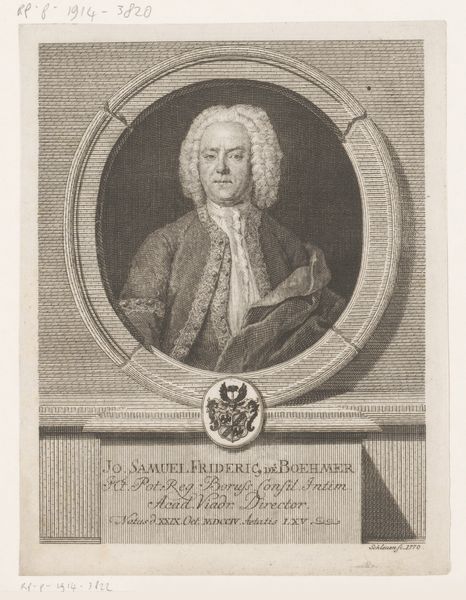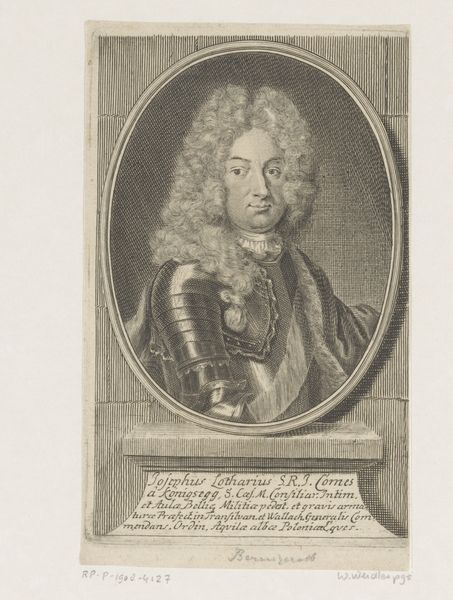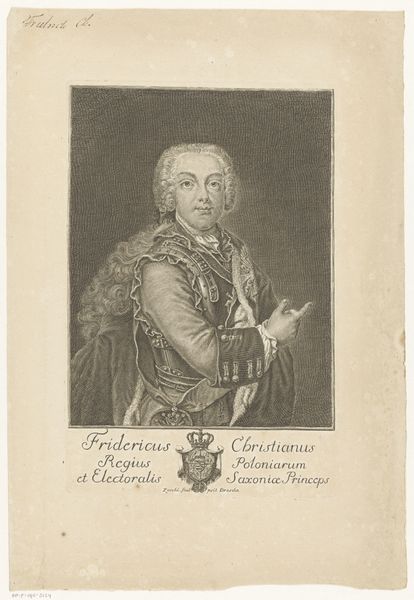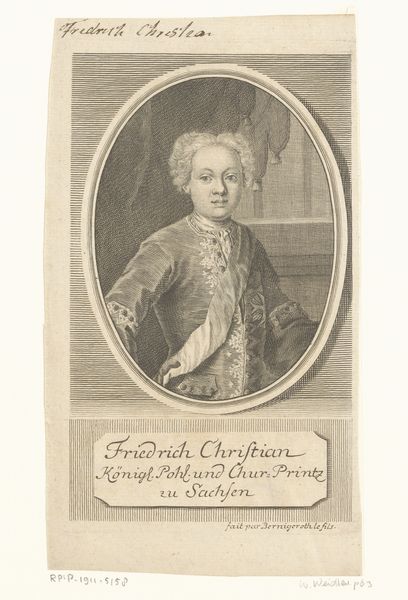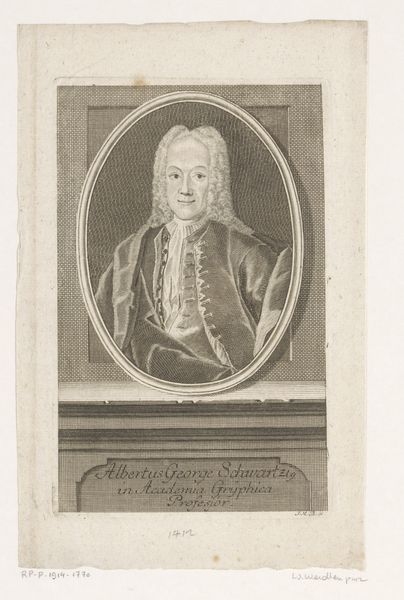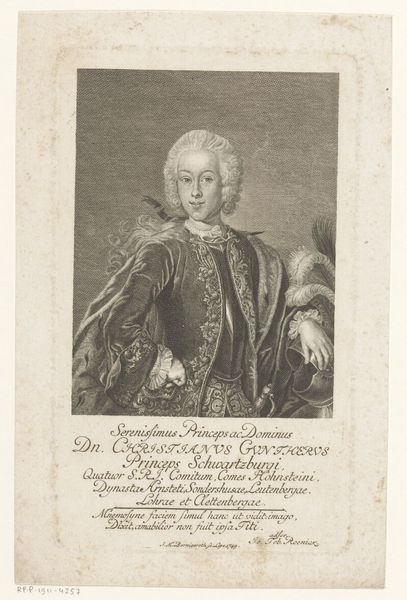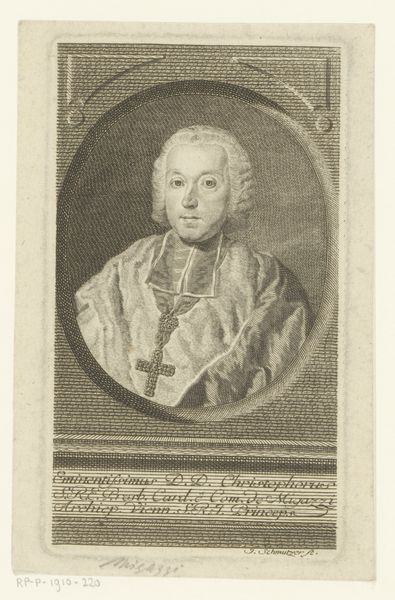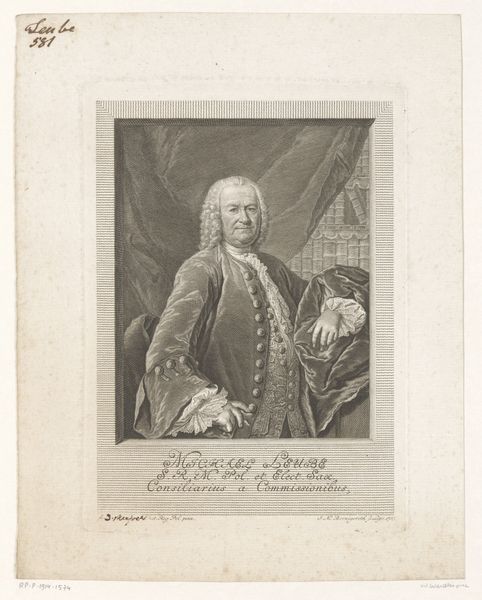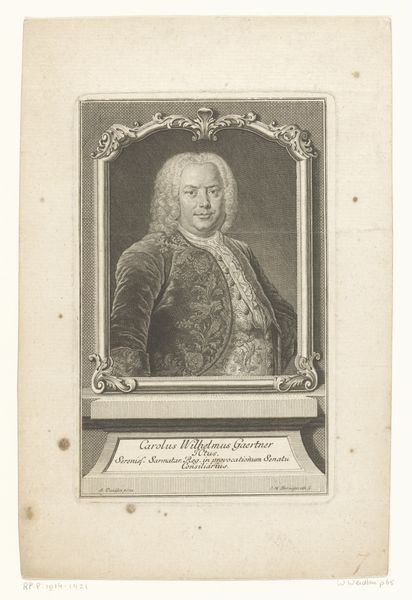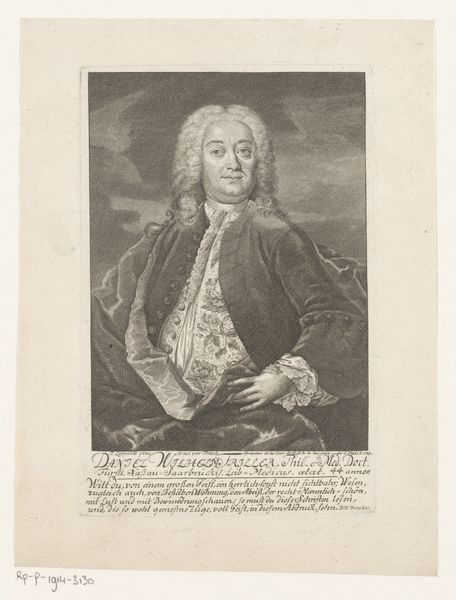
Portret van August Wilhelm van Pruisen 1732 - 1758
0:00
0:00
engraving
#
portrait
#
baroque
#
old engraving style
#
history-painting
#
engraving
Dimensions: height 150 mm, width 87 mm
Copyright: Rijks Museum: Open Domain
Curator: At first glance, this engraving feels remarkably... formal. The rigid posture, the elaborate clothing. It speaks to a world governed by strict codes of conduct. Editor: Indeed. Let's delve into the context. This engraving, created sometime between 1732 and 1758, is a portrait of August Wilhelm van Pruisen, attributed to Johann Christian Gottfried Fritzsch. This piece, currently housed in the Rijksmuseum, is more than just a likeness; it’s a calculated performance of power. The historical implications of art were often lost in its consumption for aesthetic only reasons, even now. Curator: You can almost feel the weight of expectation in his expression. I am fascinated with how notions of gender play out in art, particularly in portraits like these of prominent male figures, they often appear to conform to idealized standards of masculinity and beauty. Editor: And those "idealized standards," of course, are deeply enmeshed in the socio-political landscape of the time. This engraving served a very public role, conveying August Wilhelm’s status, authority and perhaps even the perceived stability of his rule. We cannot see it merely as artistic output removed from its societal roots. Curator: Look at the details in the garment! All that rich ornamentation – almost excessive, wouldn’t you say? How do such displays impact broader ideas of gender, privilege, or the subjugation of labor under monarchies? Editor: The artistry showcased serves the larger purpose: the glorification of the Prussian lineage. Baroque art often functioned as a form of political theater. In this case, the meticulously rendered details create a visual experience which projects might. Museums like the Rijksmuseum provide critical historical perspectives that are necessary today. Curator: It is a fascinating snapshot of its historical moment. When we interrogate the intent and impact of such art we become better stewards. Editor: Agreed. Art, in essence, can offer insights and critical analysis. With its power to document and challenge. Hopefully viewers begin to use that vision for new perspectives of their own.
Comments
No comments
Be the first to comment and join the conversation on the ultimate creative platform.
